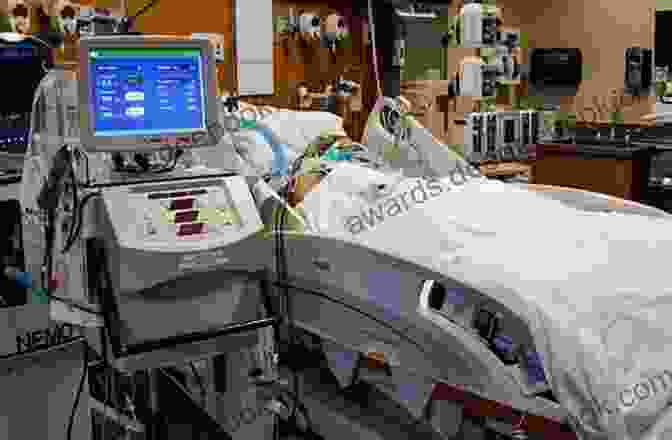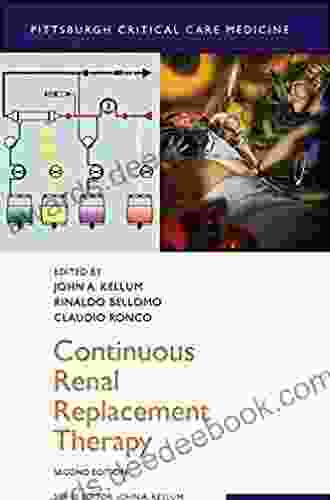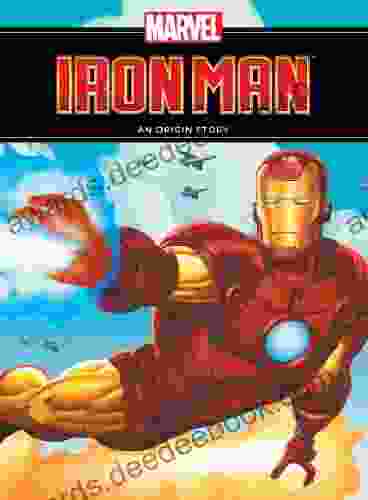Continuous Renal Replacement Therapy in Critical Care Medicine: A Comprehensive Guide for Pittsburgh Specialists


Continuous renal replacement therapy (CRRT) is a life-saving treatment for patients with acute kidney failure who require renal replacement therapy (RRT). CRRT is a continuous, slow-flow process that removes waste products and excess fluid from the blood. It is typically used in patients who are critically ill and unstable, and who cannot tolerate intermittent hemodialysis or peritoneal dialysis.
4.5 out of 5
| Language | : | English |
| File size | : | 19949 KB |
| Text-to-Speech | : | Enabled |
| Screen Reader | : | Supported |
| Enhanced typesetting | : | Enabled |
| Print length | : | 322 pages |
| Lending | : | Enabled |
Indications for CRRT
CRRT is indicated for patients with acute kidney failure who meet the following criteria:
* Fluid overload that cannot be managed with diuretics * Severe electrolyte abnormalities * Metabolic acidosis that cannot be corrected with medical therapy * Uremic encephalopathy * Hyperkalemia that is not responsive to medical therapy * Drug overdose * Poisoning
Types of CRRT
There are two main types of CRRT:
* Continuous venovenous hemofiltration (CVVH): In CVVH, blood is withdrawn from a vein and passed through a hemofilter, which removes waste products and excess fluid. The filtered blood is then returned to the patient through another vein. * Continuous venovenous hemodiafiltration (CVVHDF): CVVHDF is similar to CVVH, but it also uses a dialysate solution to remove waste products and excess fluid. The dialysate solution is a sterile, electrolyte-containing solution that is circulated through the hemofilter along with the patient's blood.
Benefits of CRRT
CRRT offers several benefits over intermittent hemodialysis and peritoneal dialysis, including:
* Continuous removal of waste products and excess fluid: CRRT provides continuous removal of waste products and excess fluid, which helps to stabilize the patient's condition and prevent further complications. * Reduced risk of hypotension: CRRT is a slow-flow process, which helps to reduce the risk of hypotension (low blood pressure) during treatment. * Improved hemodynamic stability: CRRT helps to improve hemodynamic stability by reducing the volume of fluid in the body and improving the patient's blood pressure. * Reduced risk of infection: CRRT is a closed system, which helps to reduce the risk of infection.
Risks of CRRT
The risks of CRRT include:
* Bleeding * Clotting * Infection * Air embolism * Hypothermia * Electrolyte imbalances
Procedure for CRRT
CRRT is typically performed in an intensive care unit (ICU). The procedure involves the following steps:
* A double-lumen catheter is inserted into a large vein in the patient's neck or chest. * The catheter is connected to a CRRT machine. * The CRRT machine pumps the patient's blood through the hemofilter and dialysate solution (if CVVHDF is being used). * The filtered blood is then returned to the patient through another vein.
Monitoring during CRRT
Patients undergoing CRRT are closely monitored to ensure that the treatment is effective and that there are no complications. Monitoring includes:
* Vital signs * Blood pressure * Electrolytes * Hemoglobin * Platelets * Blood urea nitrogen (BUN) * Creatinine * Fluid balance
Duration of CRRT
The duration of CRRT depends on the patient's condition. Some patients may only require a few days of CRRT, while others may need it for weeks or months.
Weaning from CRRT
When the patient's condition improves, they can be weaned from CRRT. The weaning process is gradual and involves slowly reducing the amount of time that the patient is on CRRT.
CRRT is a life-saving treatment for patients with acute kidney failure who require RRT. CRRT offers several benefits over intermittent hemodialysis and peritoneal dialysis, including continuous removal of waste products and excess fluid, reduced risk of hypotension, improved hemodynamic stability, and reduced risk of infection.
4.5 out of 5
| Language | : | English |
| File size | : | 19949 KB |
| Text-to-Speech | : | Enabled |
| Screen Reader | : | Supported |
| Enhanced typesetting | : | Enabled |
| Print length | : | 322 pages |
| Lending | : | Enabled |
Do you want to contribute by writing guest posts on this blog?
Please contact us and send us a resume of previous articles that you have written.
 Book
Book Page
Page Chapter
Chapter Text
Text Reader
Reader Magazine
Magazine Newspaper
Newspaper Paragraph
Paragraph Sentence
Sentence Bookmark
Bookmark Shelf
Shelf Preface
Preface Synopsis
Synopsis Annotation
Annotation Codex
Codex Bestseller
Bestseller Classics
Classics Narrative
Narrative Biography
Biography Encyclopedia
Encyclopedia Thesaurus
Thesaurus Character
Character Borrowing
Borrowing Archives
Archives Periodicals
Periodicals Study
Study Scholarly
Scholarly Lending
Lending Reserve
Reserve Academic
Academic Reading Room
Reading Room Rare Books
Rare Books Interlibrary
Interlibrary Literacy
Literacy Study Group
Study Group Thesis
Thesis Dissertation
Dissertation Reading List
Reading List Theory
Theory Textbooks
Textbooks Tiansi Dong
Tiansi Dong Mark Fisher
Mark Fisher Olga Oliker
Olga Oliker Jason Deparle
Jason Deparle Deanna Stinson
Deanna Stinson John Fowles
John Fowles Nancy Hendricks
Nancy Hendricks Marin Katusa
Marin Katusa Goro Kato
Goro Kato Pierre Pouchairet
Pierre Pouchairet Maxine Eichner
Maxine Eichner Lucia Masciullo
Lucia Masciullo Lloyd Whitesell
Lloyd Whitesell Davide Destradi
Davide Destradi David E Newton
David E Newton Joan Ford
Joan Ford Ran Spiegler
Ran Spiegler Kendra C Highley
Kendra C Highley Kimberly Mccreight
Kimberly Mccreight Neil Harrison
Neil Harrison
Light bulbAdvertise smarter! Our strategic ad space ensures maximum exposure. Reserve your spot today!

 Junichiro TanizakiStephen Larigaudelle Dubuisson (1786-1864): A Catalyst for the Reform of the...
Junichiro TanizakiStephen Larigaudelle Dubuisson (1786-1864): A Catalyst for the Reform of the... Branson CarterFollow ·14.5k
Branson CarterFollow ·14.5k Brody PowellFollow ·11.1k
Brody PowellFollow ·11.1k Harvey HughesFollow ·17.5k
Harvey HughesFollow ·17.5k Reed MitchellFollow ·12k
Reed MitchellFollow ·12k James GrayFollow ·15.1k
James GrayFollow ·15.1k Caleb CarterFollow ·9.2k
Caleb CarterFollow ·9.2k Victor TurnerFollow ·18.7k
Victor TurnerFollow ·18.7k Ernesto SabatoFollow ·4.1k
Ernesto SabatoFollow ·4.1k

 Roger Turner
Roger TurnerThe Waning of the Individual in the Global Era: A...
In the rapidly globalizing world of today,...

 Reginald Cox
Reginald CoxFirst of Verbs: An Early Language
The First of Verbs (FOV) is an early...

 Cody Blair
Cody BlairThe Biography Of The Myth: Routledge Historical...
Who is the Myth?...

 Dean Cox
Dean CoxArtificial Neural Networks: Unraveling the Amazing...
Artificial Neural Networks (ANNs),...

 Kyle Powell
Kyle PowellHow To Amend Our Constitution To Rescue Democracy For All...
Our democracy is in...
4.5 out of 5
| Language | : | English |
| File size | : | 19949 KB |
| Text-to-Speech | : | Enabled |
| Screen Reader | : | Supported |
| Enhanced typesetting | : | Enabled |
| Print length | : | 322 pages |
| Lending | : | Enabled |












